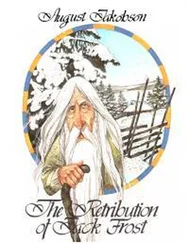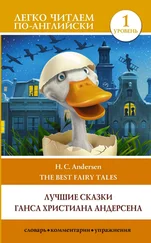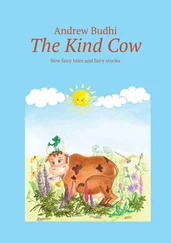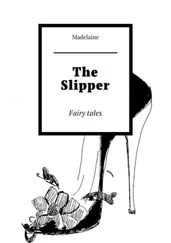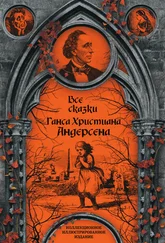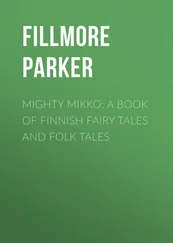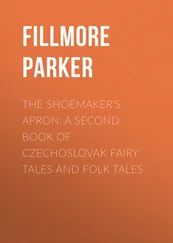Ганс Андерсен - Fairy Tales
Здесь есть возможность читать онлайн «Ганс Андерсен - Fairy Tales» весь текст электронной книги совершенно бесплатно (целиком полную версию без сокращений). В некоторых случаях можно слушать аудио, скачать через торрент в формате fb2 и присутствует краткое содержание. Жанр: Старинная литература, на английском языке. Описание произведения, (предисловие) а так же отзывы посетителей доступны на портале библиотеки ЛибКат.
- Название:Fairy Tales
- Автор:
- Жанр:
- Год:неизвестен
- ISBN:нет данных
- Рейтинг книги:4 / 5. Голосов: 1
-
Избранное:Добавить в избранное
- Отзывы:
-
Ваша оценка:
- 80
- 1
- 2
- 3
- 4
- 5
Fairy Tales: краткое содержание, описание и аннотация
Предлагаем к чтению аннотацию, описание, краткое содержание или предисловие (зависит от того, что написал сам автор книги «Fairy Tales»). Если вы не нашли необходимую информацию о книге — напишите в комментариях, мы постараемся отыскать её.
Fairy Tales — читать онлайн бесплатно полную книгу (весь текст) целиком
Ниже представлен текст книги, разбитый по страницам. Система сохранения места последней прочитанной страницы, позволяет с удобством читать онлайн бесплатно книгу «Fairy Tales», без необходимости каждый раз заново искать на чём Вы остановились. Поставьте закладку, и сможете в любой момент перейти на страницу, на которой закончили чтение.
Интервал:
Закладка:
122 Fifth Avenue
New York, NY 10011
www.barnesandnoble.com/classics
Hans Christian Andersen published his first collection of fairy tales in 1835,
and continued to issue subsequent volumes until 1872, three years before
his death. Marte Hvam Hult’s new translation is based on the first
five volumes of H. C. Andersens Eventyr ( 1963-1967) .
Published in 2007 by Barnes & Noble Classics with new Introduction,
Notes, Biography, Chronology, Inspired By, Comments & Questions,
and For Further Reading.
Introduction, Commentaries on the Tales, and For Further Reading
Copyright © 2007 by Jack Zipes.
Note on Hans Christian Andersen, The World of Hans Christian Andersen
and his Fairy Tales, Textual Annotations, Inspired by Andersen’s Fairy Tales,
Comments & Questions, and Marte Hvam Hult’s Original
Translation of Andersen’s Fairy Tales
Copyright © 2007 by Barnes & Noble, Inc.
All rights reserved. No part of this publication may be reproduced or
transmitted in any form or by any means, electronic or mechanical, including
photocopy, recording, or any information storage and retrieval system, without
the prior written permission of the publisher.
Barnes & Noble Classics and the Barnes & Noble Classics
colophon are trademarks of Barnes & Noble, Inc.
Fairy Tales
ISBN-13: 978-1-59308-260-4 ISBN-10: 1-59308-260-6
eISBN : 978-1-411-43216-1
LC Control Number 2006925199
Produced and published in conjunction with:
Fine Creative Media, Inc.
322 Eighth Avenue
New York, NY 10001
Michael J. Fine, President and Publisher
Printed in the United States of America
QM
1 3 5 7 9 10 8 6 4 2
Hans Christian Andersen

The future author of the classic stories “The Ugly Duckling,” “The Little Mermaid,” and “The Red Shoes,” Hans Christian Andersen was born on April 2, 1805, into humble circumstances in the Danish city of Odense. His father, Hans Andersen, was an impoverished cobbler who had taught himself to read and write; his mother, illiterate and superstitious, worked as a washerwoman and died an alcoholic. From an early age, Hans shared his father’s love of the theater. When Hans was a boy, he and his father built a puppet theater, where Hans would enact dramas of his own invention. Desperate for money, in 1812 Hans Andersen Sr. was paid to take another man’s place in the army of Denmark, allied with the French in the Napoleonic Wars. When he returned home, he was sick and suffering from an illness that would prove fatal in 1816. Before his mother remarried, young Hans worked in a factory, but the family’s economic woes continued.
In 1819 Hans—fourteen years old and with little education, but endowed with a remarkable singing voice and a gift for performance—left Odense to seek his fortune in Copenhagen as a singer, dancer, or actor. Through his talents and ambition, as well as a certain audacity, he attracted wealthy patrons who arranged singing lessons and a small stipend for him. In 1820 he joined the choir of the Royal Theater, one of whose directors, Jonas Collin, had Hans sent to a private school in Slagelse, 50 miles from Copenhagen. When he returned to the city in 1827, he maintained his relationship with Collin, became a frequent dinner guest at the homes of the city’s elite, and blossomed as a writer. His first poem, “The Dying Child,” appeared in 1827, and two years later he published a travel sketch in the style of German Romantic writer E. T. A. Hoffmann, who had a great influence on him.
In 1833 and 1834 Andersen visited France, Switzerland, and Italy, where he set his first successful novel, The Improvisatore (1835). He began writing fairy tales in the folk tradition and published them as Fairy Tales Told for Children ( 1835) , a volume that included “The Princess on the Pea” and “Little Claus and Big Claus.” The same year he produced a second installment of stories including “Thumbelina.” Thereafter, for the rest of his life he published a new volume of tales every year or two. Among the best known are “The Emperor’s New Clothes,” “The Steadfast Tin Soldier,” “The Nightingale,” and “The Little Match Girl.” He also published several travelogues, dozens of plays, six novels, and three autobiographies.
For inspiration, Andersen drew on the people he knew as well as on traditional folk tales. His unique style—his inventive, entertaining stories appeal to children and adults alike—at—tracted many admirers, including the Danish king, who, when Andersen was a young man, granted him a royal annuity. Andersen was an international celebrity, and the royalties from his books made him wealthy. An avid traveler, he made frequent sojourns throughout Europe, most frequently to the cultured city of Weimar, Germany. Hans Christian Andersen died on August 4, 1875, in Copenhagen.
The World of Hans Christian Andersen and His Fairy Tales

1805 Hans Christian Andersen is born on April 2, in the Danish city of Odense. His father, Hans Andersen, is a cobbler ; his mother, Anne Marie Andersdatter, works as a washerwoman. 1812 Hans Andersen Sr. leaves his family to serve in the Danish army at a time when Denmark is an ally of Napoleon. Jacob and Wilhelm Grimm publish the first volume of Children ’s and Household Tales. 1813 Danish philosopher and theologian Søren Kierkegaard is born. 1814 Hans Andersen Sr. returns to Odense, suffering from an illness contracted while he was in the army. Denmark cedes control of Norway to Sweden. 1815 The Grimm brothers publish the second volume of Children’s and Household Tales. 1816 Hans Andersen Sr. dies. Young Hans takes a factory job to help support the household. 1818 Anne Marie remarries, but the family’s financial situation does not improve. Endowed with an exceptional singing voice, Hans earns money singing in the salons of the town’s educated middle class. 1819 Young Hans leaves Odense and travels to Denmark’s capital, Copenhagen, where he pursues a career as a singer, dancer, and actor. He solicits leading figures in the city’s arts establishment before winning the patronage of composer C. E. F. Weyse, among others; he is provided with singing lessons and a small stipend. 1820 His stipend depleted, a desperate Andersen joins Copenhagen’s Royal Theater choir and lands several minor roles with the company. 1822 A play written by Andersen is rejected by the theater. With the help of one of the theater’s directors, Jonas Collin, Andersen obtains a scholarship that allows him to attend a private school in Slagelse, 50 miles from Copenhagen. The Grimms publish a third volume of Children’s and Household Tales. German Romantic author E. T. A. Hoffmann dies. 1827 Returning to Copenhagen and still under the patronage of Jonas Collin, Andersen begins dining with the cultured families of the cosmopolitan city and develops a lifelong friendship with his patron’s son, Edvard Collin. He publishes his first work, a poem called “The Dying Child.” 1829 Andersen passes entrance exams for the University of Copenhagen but does not enroll. He publishes his first book, A Walking Tour from the Holmen Canal to the Eastern Point of Amager. His first play, Love at St. Nicholas Tower, is performed at the Royal Theater. 1831 He makes his first major trip to Germany and meets many important authors and writers, including Ludwig Tieck, a German writer of fairy tales. 1832 Andersen writes The Book of My Life, the first of three autobiographies he will produce; it will not be published until 1926. The second part of Johann Wolfgang von Goethe’s Faust is published posthumously. 1833 Andersen’s mother, overcome by alcoholism, dies. During this year and the next, Andersen travels to Germany, Paris, Switzerland, and Italy. Slavery is abolished in the British Empire. 1835 The Improvisatore, an autobiographical novel set in Italy, is so successful that it is immediately published in German . Andersen’s first booklet of fairy tales, Fairy Tales Told for Children, is published in May; the volume includes “The Tinderbox,” “Little Claus and Big Claus,” and “The Princess on the Pea.” In December he publishes a second booklet of Fairy Tales that includes “Thumbelina” and “The Naughty Boy.” American novelist 1836 Andersen’s second autobiographical novel, O. T.: Life in Denmark, is published. Charles Dickens’s The Pickwick Papers begins to be published in monthly installments. 1837 A third booklet of Andersen’s Fairy Tales is published, this one containing “The Little Mermaid” and “The Emperor’s New Clothes.” A third autobiographical novel, Only a Fiddler, is published. 1838 The King of Denmark awards Andersen an annual grant that allows him to concentrate on writing. He publishes the first booklet of a new collection of Fairy Tales Told for Children that includes “The Steadfast Tin Soldier” and “The Wild Swans.” Dickens’s Oliver Twist is a best-seller in England. Naturalist and artist John James Audubon completes publication of the four volumes of The Birds of America. 1839 The second booklet of the new Fairy Tales collection, including “The Flying Trunk” and “The Storks,” is published . 1840 Andersen’s plays The Mulatto, which dramatizes the evils of slavery, and The Moorish Maiden debut at the Royal Theater. During this year and the next, he travels to Italy, Greece, and Turkey. 1842 Andersen publishes the third booklet of the new collection of Fairy Tales; it includes “The Rose Elf” and “The Swineherd.” He publishes the travel book A Poet’s Bazaar. 1843 Dickens publishes A Christmas Carol. German poet Friedrich Hölderlin dies. English critic John Ruskin publishes the first volume of his critical work Modern Painters. The Tivoli Gardens open in Copenhagen. 1844 New Fairy Tales, a collection of tales containing “The Ugly Duckling” and “The Nightingale,” is published. Andersen makes his first visit to Weimar, Germany, a cultured city to which he will return repeatedly in the years that follow. 1845 He publishes a second collection of New Fairy Tales, which includes “The Snow Queen” and “The Spruce Tree,” and a third collection, which includes “The Red Shoes” and “The Shepherdess and the Chimney Sweep.” 1847 He produces a third volume of New Fairy Tales; it includes “The Shadow.” Andersen’s second autobiography , The True Story of My Life, is published in German and is shortly translated into English. Andersen visits England and meets Dickens. 1848 He publishes a fourth volume of New Fairy Tales, which includes “The Little Match Girl,” and a patriotic novel, The Two Baronesses. Frederick VII becomes the Danish king. Denmark goes to war with Germany and Prussia over control of the region Schleswig-Holstein. German political theorist and revolutionary Karl Marx produces his Communist Manifesto. 1851 In Sweden, a travel narrative of Andersen’s visit to that country, is published. German-French poet Heinrich Heine publishes Romanzero. American writer Herman Melville publishes Moby-Dick. 1852 Andersen publishes Stories, which includes “It’s Perfectly True!” Dickens begins monthly serialization of Bleak House. German playwright Christian Friedrich Hebbel’s Agnes Bernauer debuts. 1853 Andersen publishes a second collection of Stories that includes “Everything in Its Proper Place.” 1855 The Fairy Tale of My Life, Andersen’s third and final autobiography , is published. Kierkegaard dies. American poet Walt Whitman publishes Leaves of Grass. 1857 Andersen publishes the novel To Be or Not to Be. 1858 Andersen publishes the first two volumes of the series New Fairy Tales and Stories; included are ” ‘Something’” and “The Bog King’s Daughter.” 1859 A third volume of New Fairy Tales and Stories, including “The Girl Who Stepped on Bread,” is published. 1860 English playwright J. M. Barrie, author of Peter Pan, is born. 1861 Andersen publishes the first volume in a second series of New Fairy Tales and Stories; included are “The Snow-man” and “What Father Does Is Always Right.” 1862 He publishes a second volume in the second series of New Fairy Tales and Stories; included are “The Ice Maiden” and “The Butterfly.” 1863 Andersen publishes the travel book In Spain. 1864 Denmark goes to war with Prussia and Austria over Schleswig-Holstein, which Denmark is forced to relinquish . French scientist Louis Pasteur demonstrates that treatment with heat protects certain foods from damaging microorganisms. 1865 Andersen publishes a third volume in the second series of New Fairy Tales and Stories, including “The Will-o’-the Wisps Are in Town.” Russian writer Leo Tolstoy begins publishing War and Peace. English author Lewis Carroll publishes Alice’s Adventures in Wonderland. English author Rudyard Kipling is born. 1866 Andersen publishes a fourth volume in the second series of New Fairy Tales and Stories, including “The Snowdrop.” 1870 Lucky Peter, Andersen’s last novel, appears. 1872 Andersen publishes two volumes in the third series of New Fairy Tales and Stories, including “The Gardener and the Gentry,” “Auntie Toothache,” and “The Story Old Johanna Told”; he begins to experience the first symptoms of liver cancer. 1875 Hans Christian Andersen dies on August 4 in Copenhagen. His funeral is attended by hundreds of admirers, including the Danish king.
Читать дальшеИнтервал:
Закладка:
Похожие книги на «Fairy Tales»
Представляем Вашему вниманию похожие книги на «Fairy Tales» списком для выбора. Мы отобрали схожую по названию и смыслу литературу в надежде предоставить читателям больше вариантов отыскать новые, интересные, ещё непрочитанные произведения.
Обсуждение, отзывы о книге «Fairy Tales» и просто собственные мнения читателей. Оставьте ваши комментарии, напишите, что Вы думаете о произведении, его смысле или главных героях. Укажите что конкретно понравилось, а что нет, и почему Вы так считаете.

![Ганс Андерсен - Ганс Чурбан[другой перевод]](/books/95480/gans-andersen-gans-churban-drugoj-perevod-thumb.webp)

